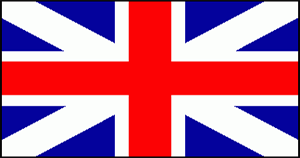War of 1812 Battles |
Colonial Wars |
American Wars |
Battle of Lacolle Mills
November 20, 1812 in Lacolle Mills, Lower Canada
 |
|||||||||||||||||||||
|
In the autumn of 1812, Maj. Gen. Henry Dearborn finally decided to attack Montreal. The American strategy was to divide Upper and Lower Canada by cutting the St. Lawrence River supply line. But, Dearborn had been painfully slow in preparing his invasion of Lower Canada.
He was extremely discouraged to find that recruiting for volunteers in New England is an uphill battle. New Englanders had little interest in attacking their neighbors and biggest trading partners.
Most of the 6,000 men that Dearborn finally gathered in Albany came from other states.
Gen. William Hull’s embarrassing surrender at Fort Detroit and the failed invasion at Queenston Heights had made many Americans hungry for a victory. President James Madison was fed up with Dearborn’s procrastination. He ordered the invasion:
“It is essential, notwithstanding the advance of the season and the difficulties thrown in the way, that the expedition against Montreal should be forwarded by all the means in your power.”
Dearborn moved a large part of his army north to Plattsburg. In this relatively short and fast battle, a very small garrison of British troops and Canadian volunteers, with the assistance of Kahnawake Mohawk warriors, defended the blockhouse of Lacolle Mills near the village of Champlain.
The advance guard of Maj. Gen. Henry Dearborn's invasion of Lower Canada was formed by 600 U.S. regulars. This advance guard was under the command of Col. Zebulon Pike. They crossed the border from the nearby village of Champlain. It was still dark when they surrounded the blockhouse at Lacolle Mills in the early morning of November 20.
Unknown to the American force, the blockhouse was undefended as the Canadian garrison had pulled out the night before. A party of American militia that had taken a different route approached the blockhouse, possibly following a brief confrontation with the outnumbered British forces. In the dark, a second group of American militia, under Pike, attacked the troops at the blockhouse, resulting in a short battle between 2 groups of American forces. The break of day revealed the horrible truth of the battle to the American troops: they had been fighting another American unit, which had crossed the border separately. Americans had been killing other Americans. Stunned by these events, the shaken soldiers were caught off guard as de Salaberry launched his counter-attack.
The American militia units had never been particularly enthusiastic about invading Canada and this detered them completely. They retreated back across the border. The coming winter would prevent the Americans from making another attempt at Montreal.
In the aftermath of this confusion, the Canadian forces, under the command of Maj. Charles de Salaberry, arrived at Lacolle Mills with his Canadian Voltigeurs and 300 Caughnawaga Indians. They launched a counterattack against the shaken American forces. After a short engagement, the American advance guard retreated back to Champlain.
Dearborn waited 3 days, then withdrew his force to Plattsburgh and ordered the troops into winter quarters. The American forces withdrew from Lower Canada completely.
The first American invasion of Lower Canada turned into an embarrassing fiasco for the Americans. The disgraced Dearborn wanted to step down from his position as commander of the U.S. forces. He wrote to President Madison:
“It will be equally agreeable to me to employ such moderate talents as I possess in the service of my country, or to be permitted to retire to the shades of private life, and remain a mere but interested spectator of passing events.”
After this defeat, the demoralized American forces would not attempt this assualt again until 1814 in the Second Battle of Lacolle Mills.
